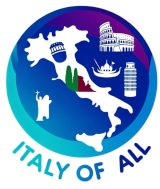The province of Fermo, located in the Marche region of central Italy, is known for its rich historical heritage, stunning landscapes, and vibrant cultural life. Established as a province in 2009, Fermo is one of Italy’s newest provinces, carved out to better manage and promote the local heritage and economy of its communities.
Geographically, Fermo is characterized by its diverse terrain, which ranges from the Adriatic Sea coastlines to the rolling hills and mountains inland. This variety allows for a mix of agricultural activities and provides numerous opportunities for outdoor recreation. The area is particularly noted for its picturesque hilltop towns and villages, which offer panoramic views of the surrounding countryside and coast.
Historically, Fermo has a long and storied past, with origins dating back to Roman times when it was known as Firmum Picenum. The historical significance of the area is reflected in its well-preserved medieval and Renaissance architecture. The city of Fermo itself is home to several notable buildings, including the Romanesque-Gothic Cathedral and the Renaissance-era Palazzo dei Priori, which houses an important library and a collection of Roman coins.
Culturally, Fermo is a hub of traditional Italian crafts and arts. The region is famous for its centuries-old shoe manufacturing industry, which continues to produce high-quality footwear sold both nationally and internationally. The area also hosts numerous festivals and events throughout the year, celebrating everything from historical reenactments to modern music and food festivals. These events not only highlight the rich cultural heritage of Fermo but also attract visitors from across Italy and abroad.
Cuisine in Fermo is typical of the Marche region, featuring a blend of sea and mountain influences. Local specialties include “brodetto,” a seafood stew unique to the Adriatic coast, and “vincisgrassi,” a rich lasagna made with multiple layers of pasta, béchamel sauce, and meat. The province is also known for its olive oil and wines, particularly Rosso Piceno and Falerio dei Colli Ascolani, which are produced in the area.
Economically, Fermo’s economy benefits from a combination of traditional agriculture, artisanal crafts, and increasingly, tourism. The shoe industry, in particular, is a significant economic driver, with many small to medium-sized enterprises focused on high-quality production. In addition, agriculture remains vital, with an emphasis on viticulture, olive cultivation, and fruit growing.
Despite challenges such as fostering economic growth while preserving its cultural and natural landscapes, Fermo is actively engaged in promoting sustainable development. This includes enhancing its tourism offerings to include eco-tourism and cultural tourism, which capitalize on its historical sites, natural beauty, and artisanal products.
Overall, the province of Fermo offers a unique blend of historical depth, artisanal tradition, and natural beauty, making it an integral part of the Marche region’s cultural and economic landscape. Its ongoing commitment to preserving its heritage while fostering sustainable and inclusive growth ensures its continued significance and appeal.
Comuni in Fermo Province:
- Belmonte Piceno
- Amandola
- Altidona
- Campofilone
- Falerone
- Fermo
- Lapedona
- Francavilla d’Ete
- Grottazzolina
- Massa Fermana
- Magliano di Tenna
- Montelparo
- Montegranaro
- Montottone
- Penna San Giovanni
- Monteleone di Fermo
- Monte Giberto
- Monte Vidon Combatte
- Monte Rinaldo
- Monterubbiano
- Montegiorgio
- Montefortino
- Montefalcone Appennino
- Ortezzano
- Monsampietro Morico
- Monte Urano
- Monte Vidon Corrado
- Montappone
- Monte San Pietrangeli
- Porto San Giorgio
- Porto Sant’Elpidio
- Petritoli
- Rapagnano
- Smerillo
- ** Sant’Elpidio a Mare
- Servigliano
- San Giacomo degli Schiavoni
- Santa Vittoria in Matenano
- Torre San Patrizio
